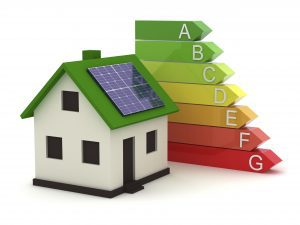
Recycling Solutions from the portfolio of the UMG Investments of the SCM Group has announced the opening of the Ukrainian Mineral Fertilizers complex, the main product of which is nitrogen-sulfur and multiple-nutrient fertilizers based on ammonium sulfate, in the city of Kryvy Rih, where over $11 million was invested.
“We planned and built the complex from scratch. The total investment amounted to more than $11 million. The company created 72 jobs,” UMG Investments CEO Andriy Gorokhov said in a press release on Tuesday.
According to the press release, the production capacities of the new manufacturer, operating with compacting technology, make it possible to provide Ukrainian farmers with up to 100,000 tonnes of finished products every year. The complex has new equipment from the Japanese-German holding Hosokawa Alpine.
The CEO of UMG Investments reminded that this is the second project of the processing portfolio this year: in March it was announced that it had entered into an agreement with Ihor Liska’s Effective Investments company to acquire a minority stake in Feednova, a new enterprise for the production of high-protein feed additives for agricultural and domestic animals. Now the company has already begun the process of placing equipment of the first stage at the construction site, and the project is planned to be completed by the end of 2020.
“We are planning further investments in recycling and are now looking for partners and considering appropriate projects for plastic recycling,” Gorokhov said.
Recycling Solutions is a Ukrainian company managing by-products and waste for the coal, metallurgical, thermal power and agricultural industries of Ukraine. Its areas of operation is processing and sale of ash and slag materials, smelter slag, rare and industrial gases, ammonium sulfate, animal by-products; production of heat and electricity from coal mine methane.
CEO of Recycling Solutions Dmytro Anufriev said that for many years crystalline ammonium sulfate – a valuable by-product of the metallurgical industry that can be turned into fertilizers – was exported for processing to countries such as Turkey, Bulgaria or Serbia, and then imported after processing back to Ukraine.
“Recycling Solutions has set up a local production facility in Kryvy Rih for processing crystalline ammonium sulfate into a ready-to-use granular product,” Anufriev said.
In the first half of 2020, Recycling Solutions sold more than 825,000 tonnes and 455,000 cubic meters of waste and by-products of domestic enterprises. The company received UAH 343.1 million of gross income and invested UAH 12.2 million in the creation of new processing enterprises, according to the release.
The company said in the press release that since its foundation, Recycling Solutions has attracted more than $15 million of investment in business development and the introduction of recycling technologies. The company employs over 220 people.
UMG Investments starts and develops businesses with high growth potential.

Bayadera Group, one of the largest alcohol holdings in the Ukrainian market, completed the grape harvesting season in Koblevo (Mykolaiv region) on more than 2,000 hectares, having collected 9,500 tonnes, which is 9.5% less than the indicator of 2019.
According to the group’s press release, the harvesting campaign ended on October 7 and lasted 1.5 months. Almost 70% of the harvest was collected by hand to create wines of the Reserve and Select lines.
According to the chief agronomist of Koblevo winery, Dmytro Moshul, the yield of such varieties as Chardonnay, Traminer, Cabernet, Merlot is 30-40 centners/ha, for nutmeg varieties from 70-90 centners/ha. The average yield on Koblevo lands is about 50-60 centners/ha.
“The next stage in Koblevo is the processing of grapes, the creation of young wine and its aging. Traditionally, the first bottling of wine of the 2020 season will take place at the beginning of 2021,” Bayadera Group noted.
Bayadera Group was founded in 1991. The group unites core assets in the alcohol industry – distribution companies and its own production of alcoholic drinks in Ukraine and Belarus, wine, vermouth and cognac, and is also the exclusive importer of the world alcohol brands in Ukraine.

Ukraine in January-September 2020 reduced imports of coal and anthracite (foreign economic activity code 2701) by 14.9% (by 2.234 million tonnes) compared to the same period in 2019, to 12.717 million tonnes.
According to the State Customs Service, coal imports amounted to $1.322 billion, which is 36.7% less than in January-September 2019.
At the same time, coal was imported from the Russian Federation for $796.222 million (60.22% of total imports), the United States for $400.793 million (30.31%), Kazakhstan for $87.431 million (6.61%), other countries for $37.712 million (2.85%).
Ukraine’s coal export for the eight months of 2020 amounted to 2,024 tonnes for $163,000 versus 13,157 tonnes for $508,000 in January-September -2019, in particular to Poland for $156,000 and Moldova for $7,000.

President of Ukraine Volodymyr Zelensky is in favor of railway services connecting more and more cities of Ukraine and Poland.
“Both Ukrainians and Poles should have comfortable conditions for mutual trips. In particular, railway services should connect more and more Ukrainian and Polish cities,” he said at the Ukrainian-Polish economic forum in Odesa on Tuesday.

The trend towards energy efficiency and high competition in the office real estate market in Ukraine stimulates the launch of projects that meet the requirements of international “green” certificates, according to NAI Ukraine.
“Interest in “green” certification in Ukraine has appeared relatively recently – most of the projects have passed it in the last five years. Thus, among the names of projects with “green” certification are the most notable and successful projects on the market. Compared with the dynamics of certification in Ukraine in the past years, when these were only isolated cases, the number of projects undergoing it now makes it possible to speak of a ‘boom’,” Maryna Hurevych, the head of the consulting department of NAI Ukraine, told the Interfax-Ukraine agency.
According to her, 18 buildings are certified in Ukraine, of which six are certified according to the European eco-certification system BREEAM (two stages of the Astarta business center, Grand in Kyiv, Optima Plaza in Lviv) and 13 objects according to the American LEED system (buildings in Unit.City, Lviv Innovation Park, the business centers MAG.NETT and KMOST, separate offices of Shell, NOX, NEC, the Chanel boutique). At the same time, in general, there are 457 such projects in Eastern Europe, almost 5,000 projects in Western Europe, and more than 20,700 in the United States.
Among the triggers for the development of “green” certification, the expert names the requirements of socially responsible clients, government regulatory policy, a decrease in operating costs against the background of growing costs of utilities, care for health and the environment, and PR.
“High competition in the real estate market forces developers to introduce new formats as quickly as possible. Despite the fact that the price for one square meter of such an eco-building is slightly higher than the “usual” one, requests from investors are becoming more and more,” the expert noted.
According to her, the “green” certification of a building can reduce operating costs by an average of 11-15%, increase the cost of business (up to 38%), ensure the best competitive position in the market, improve the reputation and brand image (up to 18%), and allows increasing rental payments (up to 18% on average higher rental income). In addition, certified business centers attract a progressive audience of tenants, whose share in the country is constantly growing.

President of Ukraine Volodymyr Zelensky signed law No. 910-IX on amendments to certain laws of Ukraine concerning the promotion of physical culture and sports, the presidential press service said.
“The document is aimed at supporting and developing the sphere of physical culture and sports. The law provides for the granting of the right to lease state-owned and municipal property without an auction to state-owned and municipal sports clubs, youth sports schools, schools of higher sports skills, Olympic training centers, physical culture and health-improving facilities, centers of physical health of the population, centers of physical culture and sports for persons with disabilities, as well as bases of Olympic, Paralympic and Deflympic training,” the presidential press service said.
In addition, the document coordinates the terminology of the current legislation in the field of physical culture and sports with the law of Ukraine on education, in particular, the term “teaching establishment” has been replaced by the term “educational institution.”
The law comes into force one month after the date of its publication.